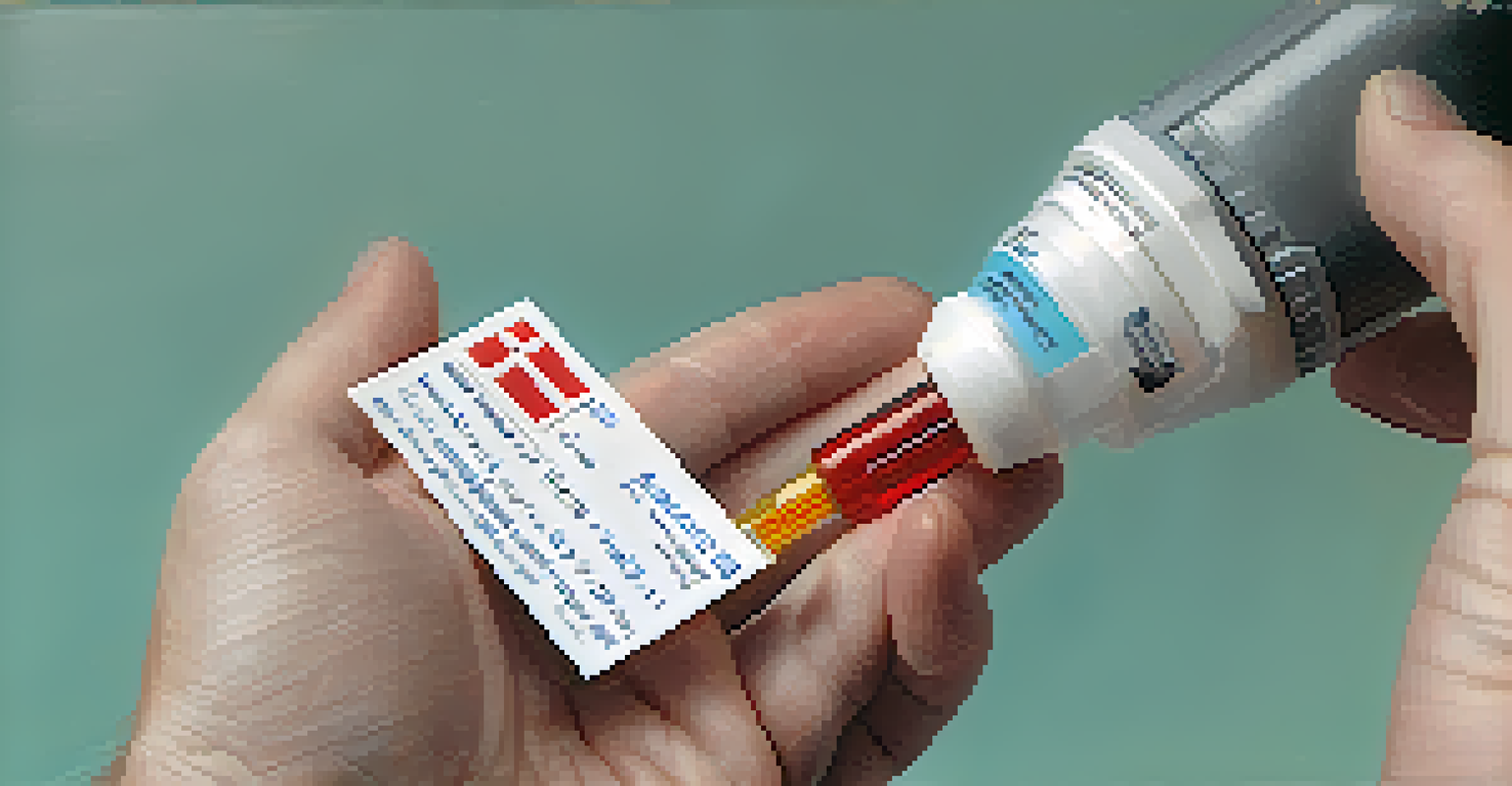Food Allergy Action Plans: Creating Your Emergency Blueprint

Understanding Food Allergies and Their Risks
Food allergies can trigger severe reactions, sometimes leading to life-threatening situations. Understanding the nature of these allergies is crucial for anyone affected, whether it’s a child or an adult. Common allergens include peanuts, tree nuts, dairy, eggs, soy, wheat, fish, and shellfish, but individual allergies can vary widely.
An ounce of prevention is worth a pound of cure.
When someone with a food allergy consumes even a tiny amount of the allergen, their immune system responds aggressively. This can result in symptoms ranging from hives and stomach cramps to anaphylaxis, a severe reaction that can inhibit breathing and requires immediate medical attention. Knowing these risks helps in creating a proactive response plan.
By acknowledging the seriousness of food allergies, we can take steps to prepare for potential emergencies. Creating a food allergy action plan is not just a precaution; it’s a vital part of keeping individuals safe and ensuring peace of mind for families.
Why You Need a Food Allergy Action Plan
A food allergy action plan serves as a personal emergency blueprint. It outlines specific steps to take in the event of an allergic reaction, ensuring that everyone involved knows what to do and when. This clarity can be lifesaving, especially in high-pressure situations.

Moreover, having a written plan helps to reduce anxiety for both individuals with allergies and their caregivers. It empowers them with knowledge and confidence, knowing that they are prepared for any scenario. This plan also facilitates communication among family members, schools, and other caregivers.
Importance of Food Allergy Action Plans
Creating a food allergy action plan is essential for ensuring safety and preparedness in case of allergic reactions.
Without a food allergy action plan, the response to an allergic reaction can become chaotic and confusing. A well-structured plan helps streamline the process, making it easier to act quickly and effectively, which can make all the difference in an emergency.
Identifying Triggers: Know What to Avoid
The first step in creating an effective food allergy action plan is identifying specific triggers. Understanding which foods cause reactions is critical for avoiding dangerous situations. Keeping a detailed food diary can help track symptoms and pinpoint allergens.
Knowledge is power.
Once you know the allergens, it’s essential to educate everyone involved, from family members to teachers and friends. Share information about what to avoid and how to read food labels carefully. Many packaged foods may contain hidden allergens, so vigilance is key.
Additionally, it’s helpful to create a list of safe foods that can be enjoyed without worry. This not only simplifies meal planning but also ensures that individuals with allergies can participate fully in social gatherings and meal times, enhancing their quality of life.
Creating Your Action Plan: Essential Components
Your food allergy action plan should include several critical components. Start with a clear outline of allergens, symptoms of reactions, and emergency contact information for both caregivers and medical professionals. This ensures that anyone can access the information quickly.
Next, outline specific steps to take in case of an allergic reaction. This could include administering antihistamines, using an epinephrine auto-injector, or calling emergency services. Make sure everyone involved understands these steps thoroughly.
Identifying Allergens is Crucial
Knowing specific food allergens helps prevent dangerous situations and facilitates informed meal planning.
Lastly, consider including a section on how to recognize and respond to mild versus severe reactions. This distinction can guide caregivers in deciding when to take immediate action versus when they can monitor the situation more closely.
Training and Education: Preparing Everyone Involved
Once your food allergy action plan is in place, it’s time to ensure that everyone is prepared. Conduct training sessions for family members, caregivers, and teachers to go over the plan in detail. Role-playing different scenarios can help reinforce the steps needed during an actual emergency.
Education is also crucial; share resources on food allergies and their management. This might include articles, videos, or even local support groups where individuals can learn from others' experiences. Knowledge is empowering and can help reduce fear around food allergies.
Moreover, keeping open lines of communication is vital. Encourage everyone to ask questions and express any concerns they may have about the plan. This dialogue fosters a supportive environment, making it easier for everyone to work together in case of an emergency.
Regular Review: Updating Your Action Plan
A food allergy action plan is not a one-time effort; it requires regular review and updates. As circumstances change, such as a child growing or new allergies developing, it’s essential to revise the plan accordingly. Schedule routine check-ins, perhaps once every few months, to ensure the plan remains relevant.
During these reviews, assess the effectiveness of the plan. Gather feedback from everyone involved about what’s working and what might need adjustments. This collaborative approach can help fine-tune the action plan, making it even more effective.
Regular Updates Keep Plans Effective
Regularly reviewing and updating the food allergy action plan ensures that it remains relevant and effective as circumstances change.
Additionally, keep a close eye on any changes in food labeling laws or new allergen information. Staying informed ensures that your plan is always aligned with the latest safety guidelines, giving everyone peace of mind.
Conclusion: Be Proactive for Safety and Peace of Mind
Creating a food allergy action plan is a proactive step towards ensuring safety for those with food allergies. By understanding the risks, identifying triggers, and preparing a detailed action plan, you can significantly reduce the chances of a severe allergic reaction. Remember, knowledge and preparation are your best defenses.
Engaging everyone involved in the planning process not only empowers them but also strengthens the support network around individuals with allergies. It fosters a culture of understanding and safety, making it easier to navigate social situations without fear.

Ultimately, the goal is to create an environment where individuals with food allergies can thrive without the constant worry of accidental exposure. With a comprehensive food allergy action plan in place, you can enjoy life’s moments with greater confidence and peace of mind.